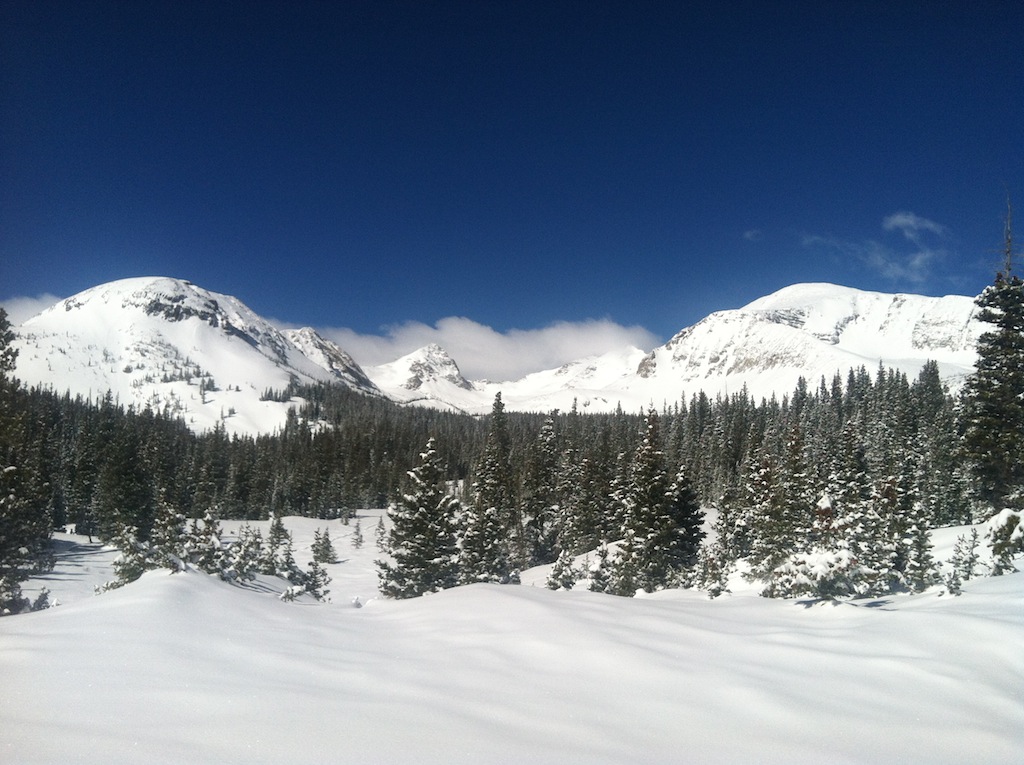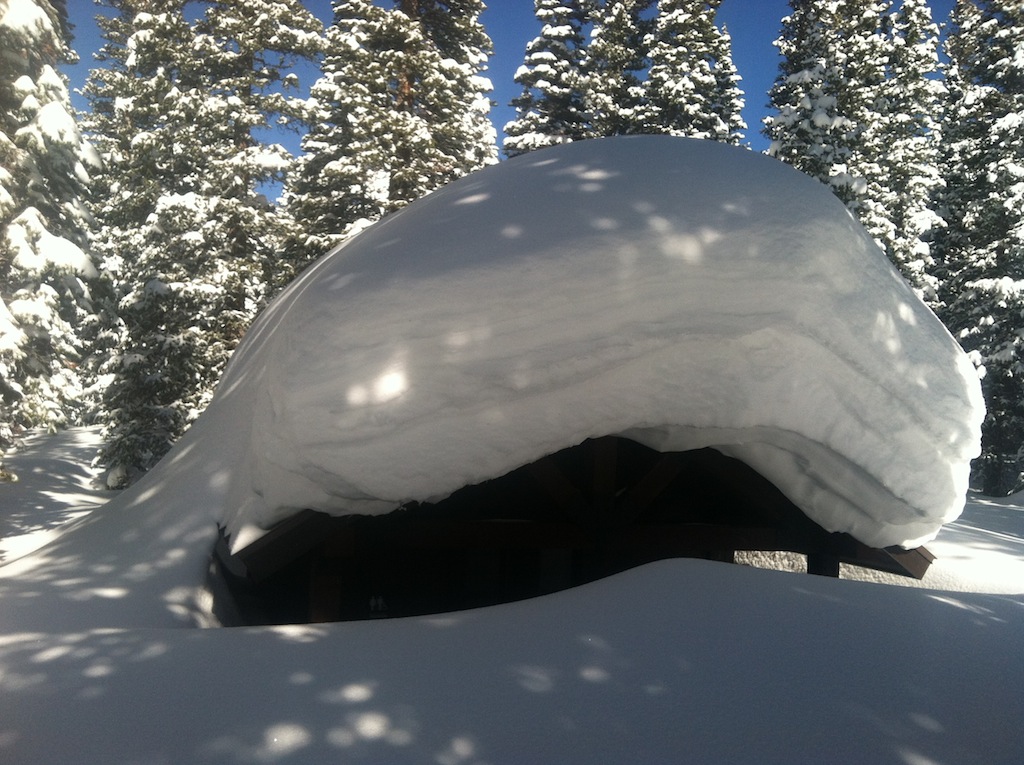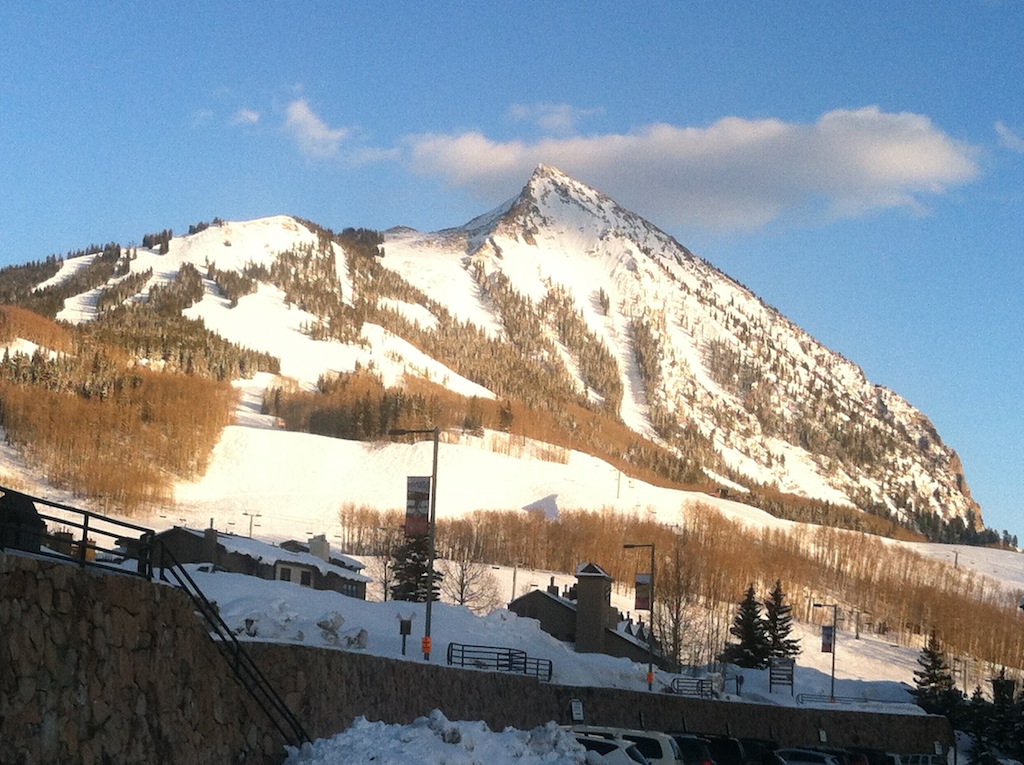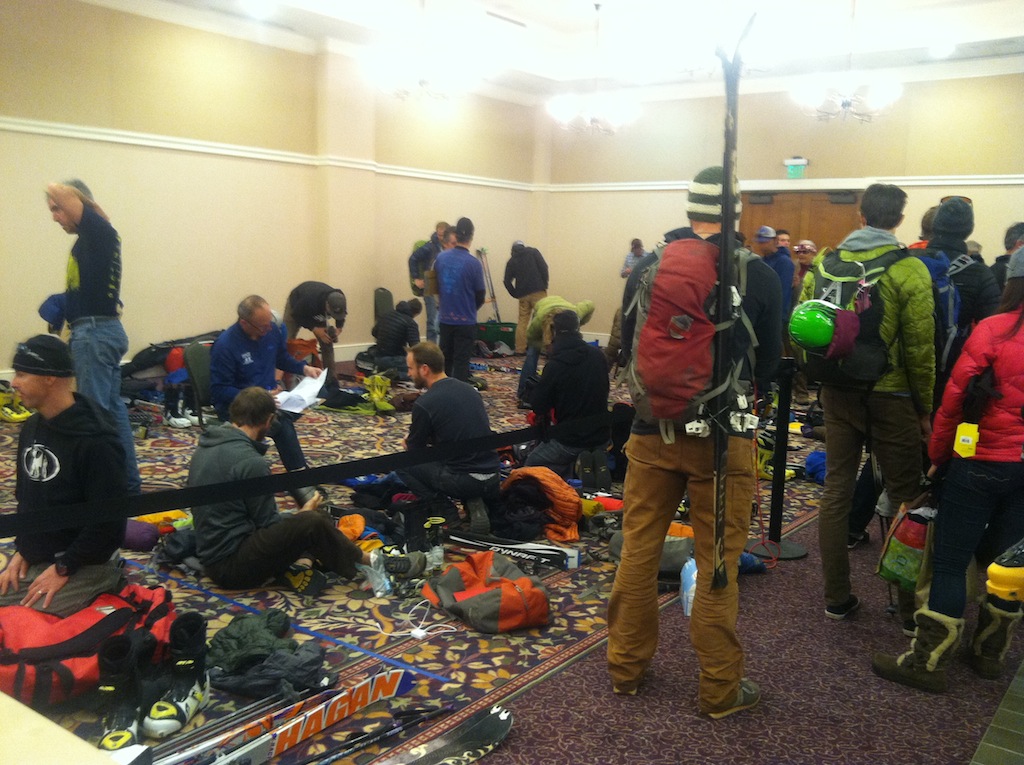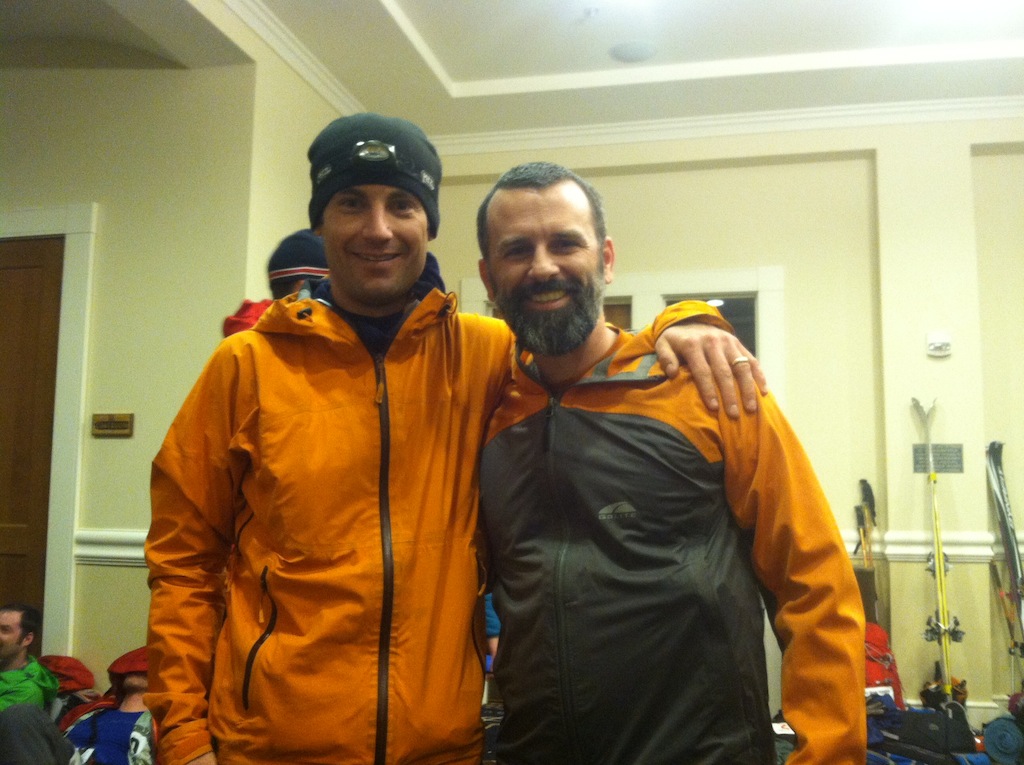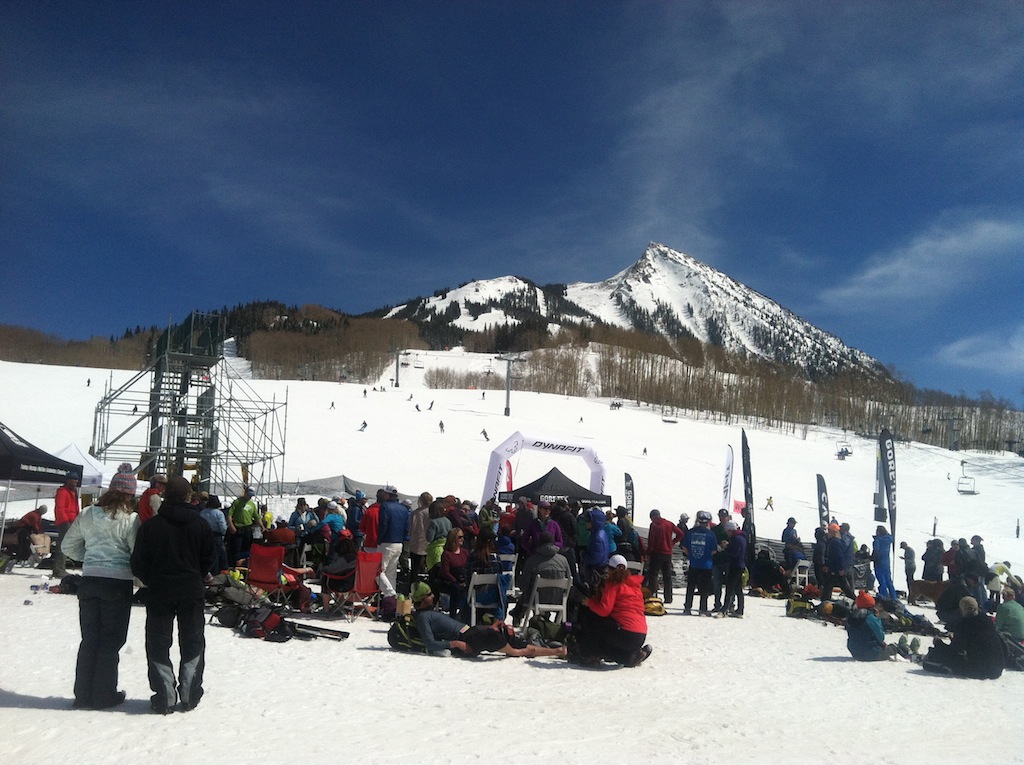As the weeks went by wearing an orthopedic walking boot to allow my broken foot to heal, I grew more and more restless. The Elk Mountains Grand Traverse was fast approaching at the end of March, and sitting on the couch day after day wasn’t doing my leg fitness any favors. I did what little I could to stay in shape … mostly push-ups and sit-ups, and some static wall sits for my quads that didn’t require impact on the foot. But I wanted—and needed—to do more if I was going to survive the race.
The fabled Elk Mountains Grand Traverse is one of the premier ski mountaineering races in all of North America. It takes an elegant point-to-point route from Crested Butte to Aspen, Colorado, through and over the rugged Elk Mountains, including surmounting several high mountain passes. It traverses 40 miles, with 7,800 feet of cumulative elevation gain, and finish times ranging from 8 to 16 hours for the required teams of two. Suffice it to say that the Grand Traverse has been on my endurance racing bucket list for years.
So when my friend Ben last year invited me to race the Traverse with him in 2014, I don’t think he’d even finished asking the question before I’d said yes. We registered minutes after registration opened back in December, with bold ambition for how we’d do in the race—Ben is a strong runner and an even stronger skier; I have years of ultramarathon racing experience in my legs with a few seasons of shorter ski mountaineering racing experience before that.
Then, just over a month after we registered, I broke my left foot.
Some push-ups, sit-ups, and wall sits in my living room were not going to get me ready for a race of this magnitude. I needed to train on my skis in the mountains. And Ben and I needed to train together. We’d never raced as a pair and needed to sort out our team dynamic, set expectations, and otherwise get on the same racing page.
My foot was still quite painful walking around in sneakers or shoes, but I discovered that locking my foot up in my ski mountaineering boot was actually even more supportive than the orthopedic walking boot. Though walking was still difficult, I could climb and ski with almost no pain.
Ben and I set our first date to train together. Then another. And another. We also trained on our own when we couldn’t sync up our schedules.
On our first training day together—at a popular backcountry skiing spot called Berthoud Pass—I felt just how much fitness my legs had lost, and saw just how much ground I needed to make up to close the significant gap between Ben’s strong fitness and my recovery. At one point, climbing back up through the trees to do another downhill lap off an adjacent mountain, I offered that Ben might want to consider swapping me out for another partner who’d be more ready for the race. He quickly and graciously dismissed the suggestion. I quietly hoped that I wouldn’t make him regret the decision to stick with me as his race partner for this year’s Traverse.
Soon enough race week arrived. Ben and I met up in Crested Butte, eager for the challenge just ahead. There was a palpable excitement and intensity among the hundreds of ski mountaineers who’d descended upon the small mountain town.
We fussed with our gear, then fussed with it some more. The race had an extensive list of required and strongly suggested equipment that made our packs swell with size and weight—extra insulating layers, extra gloves, extra socks, extra headlamps and batteries, repair kits, overnight shelter, stove and fuel, food, water, spare climbing skins, an extra ski pole, avalanche beacon, metal shovel and avalanche probe, and the list went on and on and on. We scrutinized everything we’d packed. Is it really necessary? Is there a way to make it smaller or lighter? Could it be swapped for an alternate piece of gear that would still meet the requirements?
There was also nervous anticipation—among us and the other racers. The race route traveled through several major avalanche paths, and the snow had been absolutely dumping over the mountains. As the pre-race briefing approached, the overall mood shifted from one of hope and optimism that we’d be able to continue through to Aspen, to one of ominous pessimism that avalanche danger would be too high and we’d be forced to race an alternate route.
Even though we knew it was probably coming, the disappointing news fell like a bombshell. 24 inches of new snow just before the race, on top of even more snow that’d fallen earlier in the week, had made avalanche danger far too high. For the third time in 17 years, we’d be racing what locals refer to as the Grand Reverse. Instead of starting in Crested Butte and finishing in Aspen, we’d start in Crested Butte, ascend high and deep into the Elk Mountains on the regular course, but then turn around and return to Crested Butte via an alternate route.
As usual, the race began at the base of Crested Butte Mountain Resort at the stroke of midnight. The idea was to cover much ground under the cold darkness of night by power of headlamp before the warming sun increased the avalanche hazard. A few minutes before the race start we joined more than 175 teams and more than 350 racers out on the snow, clicked into our skis, and smiled. The moment had arrived.
After some brief pomp and circumstance, including a ski-mountaineering-inspired prayer of protection for the racers delivered by a local bishop/priest (though I’m not sure if this was an officially ordained position!), we were off. A long string of white lights began the even longer, slow ascent into the Elk Mountains.
We climbed up and over the shoulder of Mount Crested Butte, followed by a smooth, fast descent off the backside of the mountain, then a gradual climb up Brush Creek, past the forebodingly named Death Pass, and to the Friends Hut (a backcountry cabin located near 12,000 feet just below Star Peak).
Ben and I made good time reaching the turnaround above Friends Hut and below Star Peak, covering those ~15 miles in about 4 hours. Until then we’d been moving very efficiently, passing a number of teams, and in general keeping ourselves in the front quarter of the race field. But by then my race was unraveling, fast.
Piece by piece, I was coming apart.
Despite attempts to prevent them, somewhere around mile eight I developed half-dollar-size blisters on both the arches of my feet that sent shooting pain up my lower legs with each step.
Ben and I have different approaches to race nutrition—he prefers to keep moving and eat less at the sacrifice of calories; I prefer to pause briefly every hour and eat about 200 calories to sustain my energy for the long haul. But on this race we erred toward the former, and so I began to run a calorie deficit.
I also suspect I was beginning to feel some acute mountain sickness. We were pushing the pace decently hard, and I soon began to feel both lightheaded and nauseous. Sometimes when you flirt with your red line, you cross it, and I probably did. That’s simply a risk.
Then there were my fingers. Three fingers on my right hand were numb down to the base knuckles, and I couldn’t re-warm them and keep them warm. Don’t get me wrong; it was a cold night. My beard became a mask of white and I had ice on the inside of my jacket. But I’ve been out in much colder weather. Maybe my heavy pack was pinching a nerve in my shoulder or cutting off circulation. Regardless, I started to seriously worry about frostbite.
At the Friends Hut checkpoint I told Ben that my race—and by default, therefore, his race—was over. I dreaded making the call, but I was done. I know he must have been crushingly disappointed to drop; maybe frustrated with me. That’d all be very understandable. If so, he did a good job taking the news in stride.
We informed race officials, and just like that, our Grand Reverse was over. Sort of.
Though we were no longer officially racing, there was one big logistical problem: we dropped above the Friends Hut, at literally the farthest possible point from civilization we’d be on the course. We were out of the race, but we still had to get ourselves out of the mountains.
The stars of the Milky Way galaxy overhead gave way to a glorious sunrise. We made our way down the Brush Creek valley, curiously enough keeping pace with or even passing other teams that were still in the race. Relaxing our own pace and descending in elevation had brought some of my strength back, while the sun and warmer temps brought life back into my fingers.
That didn’t matter. It had been too hard a night, and my body and my mind had too little fight left in them. Finally, after ~30 miles on our skis, we stepped off the snow and into a race official’s Subaru, which shuttled us a few more miles back to the base of Crested Butte Mountain Resort.
It was hardly the start to the 2014 endurance racing season I’d envisioned, but there were other races coming on the calendar. First, though, we’d fly to NY to introduce Timothy to the East Coast family. It was just the change of pace I needed.
–Pete
